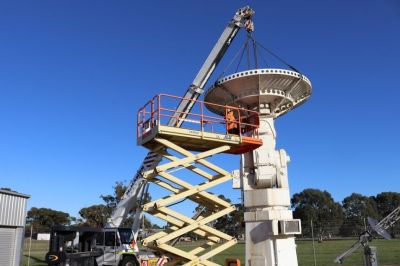In the comments of a recent article, the question came up as to where to find projects from the really smart kids the greybeards remember being in the 70s. In the case of [Will Dana] the answer is YouTube, where he’s done an excellent job of producing an ISS-tracking lamp, especially considering he’s younger than almost all of the station’s major components.*
There’s nothing ground-breaking here, and [Will] is honest enough to call out his inspiration in the video. Choosing to make a ground-track display with an off-the-shelf globe is a nice change from the pointing devices we’ve featured most recently. Inside the globe is a pair of stepper motors configured for alt/az control– which means the device must reset every orbit, since [Willis] didn’t have slip rings or a 360 degree stepper on hand. A pair of magnets couples the motion system inside the globe to the the 3D printed ISS model (with a lovely paintjob thanks to [Willis’s girlfriend]– who may or may be from Canada, but did show up in the video to banish your doubts as to her existence), letting it slide magically across the surface. (Skip to the end of the embedded video for a timelapse of the globe in action.) The lamp portion is provided by some LEDs in the base, which are touch-activated thanks to some conductive tape inside the 3D printed base.
It’s all controlled by an ESP32, which fetches the ISS position with a NASA API. Hopefully it doesn’t go the way of the sighting website, but if it does there’s more than enough horsepower to calculate the position from orbital parameters, and we are confident [Will] can figure out the code for that. That should be pretty easy compared to the homebrew relay computer or the animatronic sorting hat we featured from him last year.
Our thanks to [Will] for the tip. The tip line is for hackers of all ages, but we admit that it’s great to see what the new generation is up to.
*Only the Roll Out Solar Array, unless you only count on-orbit age, in which case the Nakua module would qualify as well.













